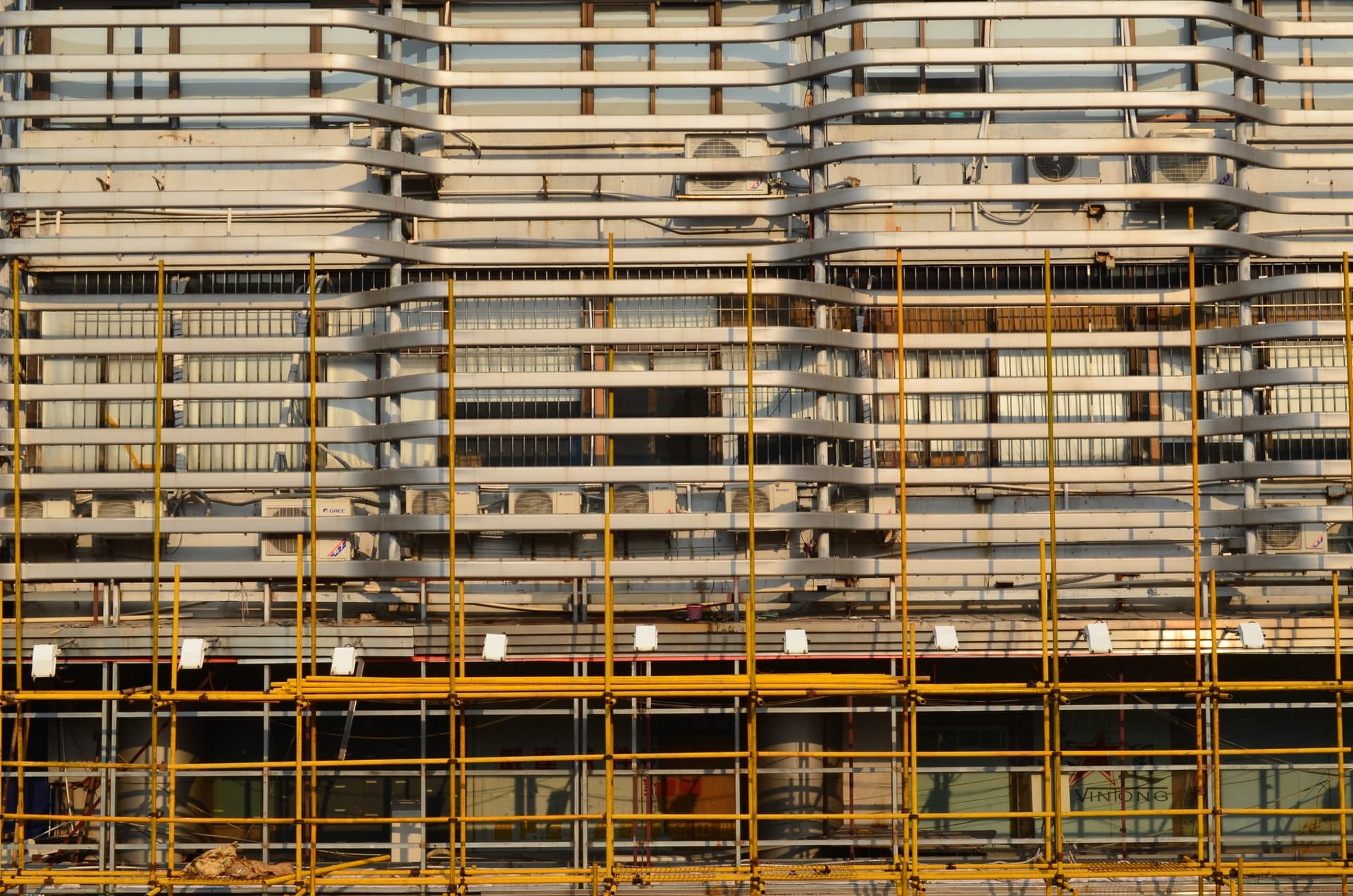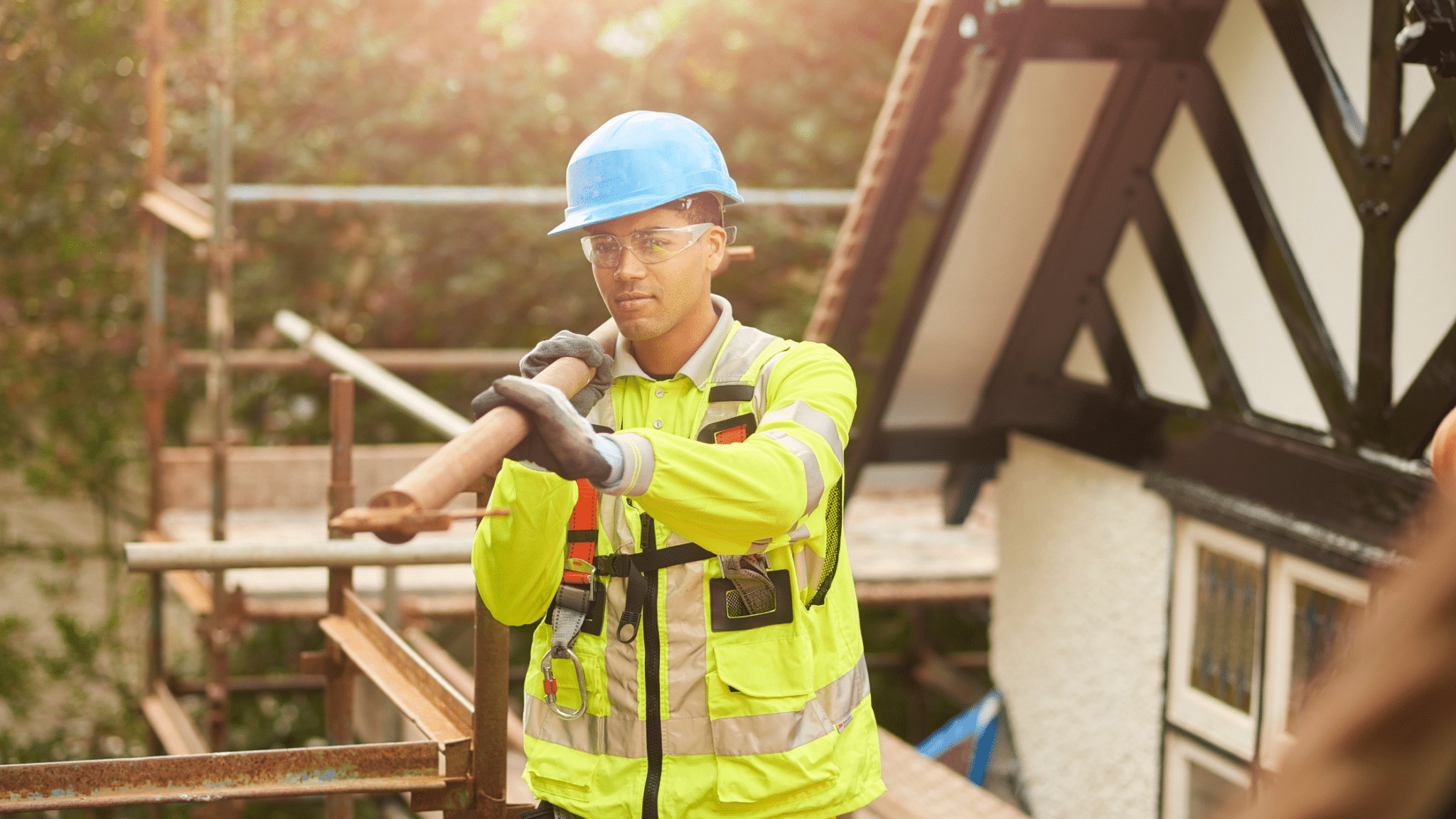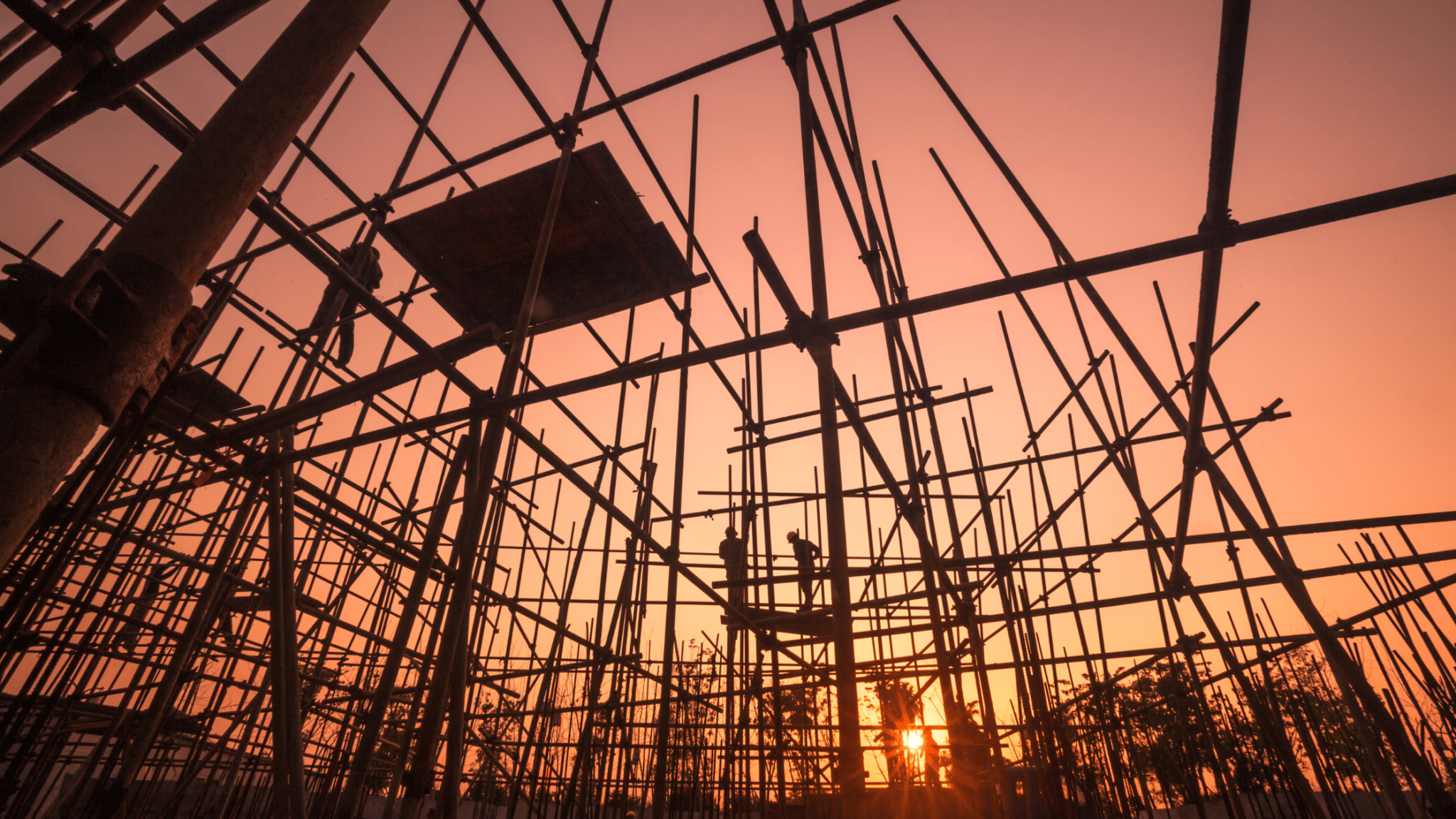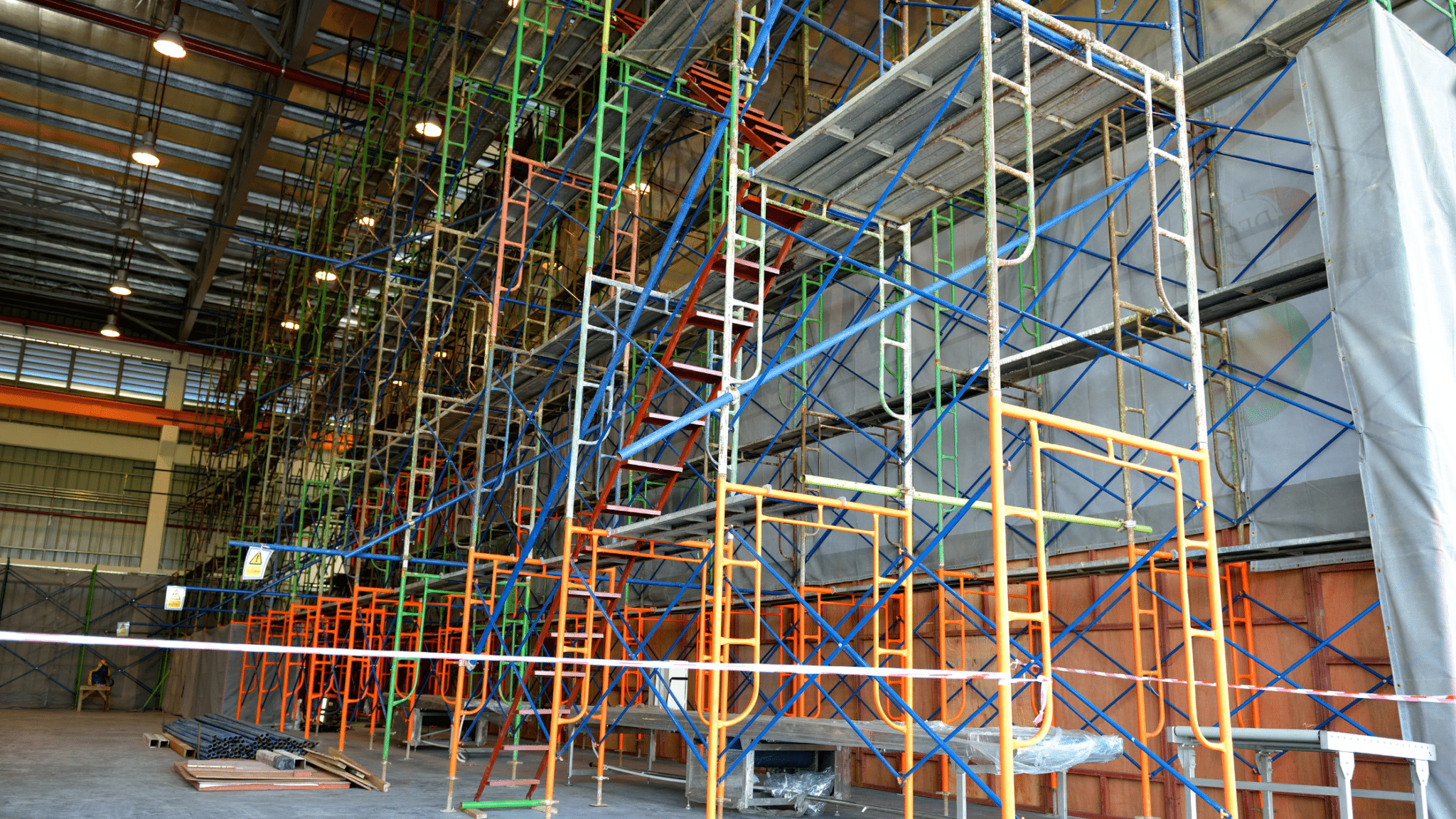Understanding a scaffolder's job responsibilities ensures you avoid scams and get your money's worth. Also,…

What are the Advantages of Aluminium Scaffolding?
Scaffolding can be made from multiple materials, including aluminium, steel, wood, and even carbon fibre. Whilst each has their own advantages and drawbacks, aluminium is an excellent choice for many applications. In this article, we explain what the advantages of aluminium scaffolding are.
So, what are the advantages of aluminium scaffolding? Aluminium scaffolding is lighter, more manoeuvrable, and lasts longer than steel scaffolding. It has excellent corrosion resistance, requires little maintenance and is suited to a wide range of applications. Aluminium scaffold towers are also lighter and easier to assemble than their steel counterparts.
For an in-depth discussion on these advantages as well as a look at some potential disadvantages, read on.
What are the Advantages and Disadvantages of Aluminium Scaffolding?
As with any scaffolding material, aluminium has both advantages and disadvantages. Here are the main points to consider when deciding if aluminium is the right choice for you.
Advantages of Aluminium Scaffolding
Lighter Than Steel
Aluminium is considerably lighter than steel. This has multiple benefits across the board. It’s easier to load, transport and erect than steel. It can also potentially reduce the need for cranes or other pricey lifting gear, as much of the lifting can be done by hand.
Excellent Strength-To-Weight Ratio
The strength-to-weight ratio (also known as Specific Strength or Self-Support Length) describes a material’s ability to support its own weight. Imagine two long, solid poles of metal of the same diameter are built next to each other, one from steel and one from aluminium. Because aluminium has a much higher strength-to-weight ratio, you can make the aluminium pole much taller than the steel one before it buckles under its own weight. This translates directly into scaffolding, especially applications such as aluminium scaffold towers, as they can safely be built using aluminium to a lower final weight than steel, as long as the load they are intended to bear is taken into consideration.
Superior Manoeuvrability
Manoeuvrability is always something to strive for on-site, and the better it is, the faster and more effectively work can be completed. Ease of movement and transportation from the point of view of a site worker reduces stress and saves energy. Injury from strain or drops is less likely with lightweight aluminium than it is with heavy steel. Heavy steel platforms enhance this issue. For increased safety and peace of mind, platforms with lighter weight and equal strength are clearly advantageous, and this is possible when using an aluminium scaffold.
Reduced Danger from Oxidation
Any scratches below the surface of aluminium quickly form a thin oxide layer, blocking further deterioration. This means that any surface damage effectively protects itself, as long as the damage isn’t structural. In contrast, oxidisation (i.e. rust) is a much more serious concern with steel and can quickly lead to failures in structural integrity. Steel scaffolding needs frequent and careful inspection for signs of corrosion that can lead to failures.
Disadvantages of Aluminium Scaffolding
Whilst Aluminium is an excellent choice for many scaffolding applications, it does have some disadvantages which should be considered.
Cost
As it’s a rarer resource than wood or steel, aluminium scaffolding can often cost quite a bit more. However, since it is much more corrosion resistant and generally resilient than steel or wood, aluminium scaffold could be considered as more of an investment. It will last longer before needing replacement and its lower weight makes it less hassle to store. Another way to compensate for its cost would be to hire it on a job-per-job basis rather than purchasing it outright.
Load Bearing Capacity
All scaffolding materials are rated for a specific load, exceeding this load can cause critical failures. In the case of wood and carbon fibre, this is a sudden snapping or splitting. Steel and aluminium can also snap, although aluminium is more likely to buckle or twist.
The weight rating for whatever material of scaffolding you use should be carefully considered and, ideally, scaffolding should be chosen that can bear more than the intended weight of the job. Aluminium is less dense than steel so its load bearing capacity is lower. That being said, it’s high enough that for the majority of jobs this is not an issue. It’s always best to check with an expert in advance of a job to make sure you’re making the best possible selection of materials.
Why is Aluminium Scaffolding Better than Steel?
Aluminium has a few key advantages over steel for the majority of worksite applications.
Faster to Assemble and Disassemble Than Steel
Due to it’s light weight and durability, aluminium scaffold can be moved and erected much more quickly than steel. This is ideal for short term projects or emergencies as it can be erected up to twice as fast as traditional steel scaffolding. It also makes it well suited to indoor applications as it can be taken inside and erected by hand, eliminating the need for lifting gear and reducing disruption time. In contrast, steel or wood scaffolding have the disadvantage of being heavier and more cumbersome.
Reduced Cost From Transport and Erection
Aluminium is easier to transport because it’s reduced weight saves fuel and it can often be moved using less powerful vehicles. Because aluminium is easier to transport and erect, using it can save a lot of time. And as we all know, time is money. Reducing how much labour time is needed also reduces costs.
Uses for Aluminium Scaffolding
Aluminium scaffolding has a wide range of uses on many job sites and can be used in many of the same places that steel, wood and carbon fibre can. Here are some of the novel uses that aluminium excels at:
Well Suited to Suspension Applications
As well as allowing for easy transportation, the weight of aluminium scaffolding has other benefits. When erecting a suspended scaffold (also known as a swingstage), suspension support is provided by ropes or chains from above. So the heavier the structure needing to be supported, the more supports are needed. This makes aluminium ideal, as it can be safely supported by fewer suspension points. Lighter aluminium scaffolds also pose less danger to workers.
Less Likely to Cause Damage
It’s not only worker safety that can be improved by the lightweight aluminium scaffold; this type of scaffold is often utilised to wash windows or work on the sides of delicate structures made from glass or during building restoration projects. Scaffolding of this kind is often fitted with wheels or rubber stand-offs. The comparatively lightweight aluminium scaffold helps to lower the chance of damage.
Aluminium scaffolding at Hi-point Scaffolding
Aluminium has a variety of advantages over other materials when it comes to scaffolding. It’s lightweight, manoeuvrable, corrosion resistant and safer than materials like steel or wood. It can also reduce the turnover time of a project due to its versatility.
In fact, here at Hi-point Scaffolding we offer Aluminium Scaffolding hire at relatively short notice and can either leave the tower in place or take it away the same day in some instances. To find out more about our scaffolding services, contact Hi Point for a quote today.



